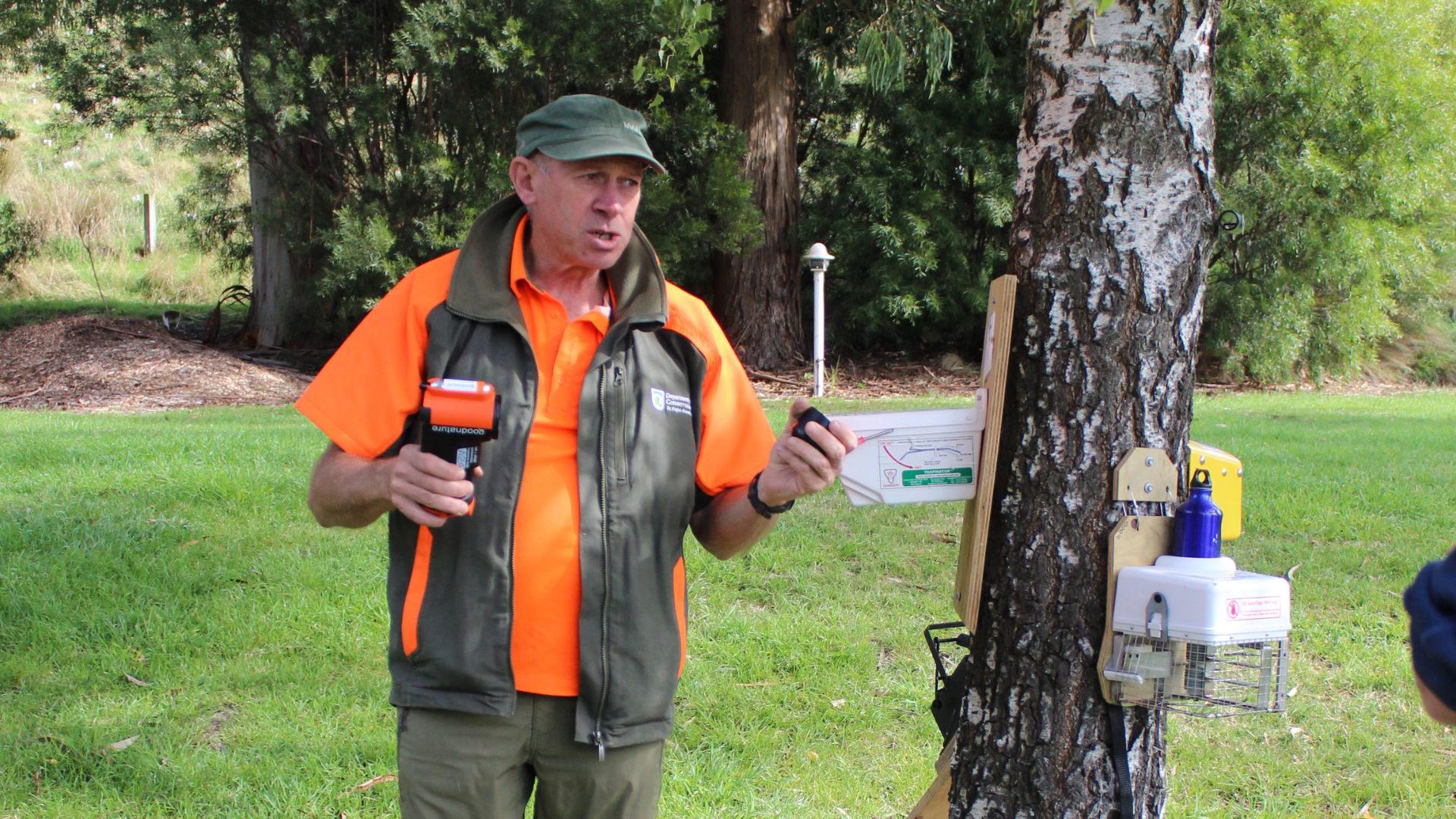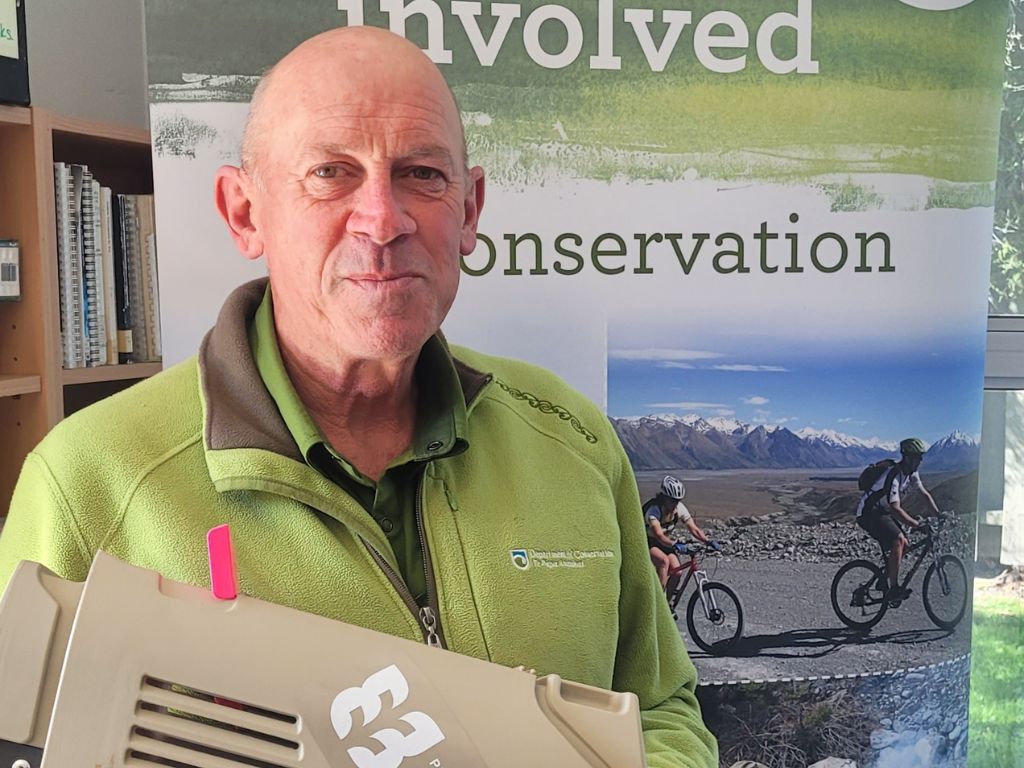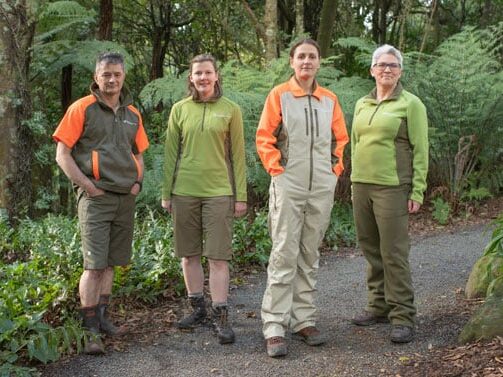Tim Exton is a man on a mission. As the Department of Conservation’s (DOC) predator free ranger for eastern Te Waipounamu (South Island), Tim spends his days travelling from town to town, connecting with local staff and community members.

Predator free from the inside out
Tim Exton is both a predator free guru – giving demonstrations, holding workshops and dispensing trapping wisdom – and a networker extraordinaire. Life on the road can be hectic, but each kilometre he travels brings the region’s predator free groups closer together.
DOC frontline staff are often the first port of call for community groups keen to get involved in the predator free movement. Tim jokes that “people see the green uniform and think we’re all experts in predator free.”
With 33% of the country to look after and 30 years’ of experience in protecting native biodiversity and ecosystems, many DOC staff know a thing or two about trapping. But that doesn’t mean all frontline staff are confident in helping communities with predator free mahi.
So, to help upskill DOC staff, Tim’s been piloting a training programme in the eastern South Island. The pilot is called ‘Predator Free Supporting Communities’. Staff get the chance to complete an e-learning module that teaches them the strategy behind the movement and how to effectively engage with communities.
Tim shows staff how to access national and regional resources so that they can point community groups in the right direction. He’s been taking on feedback as he goes, tweaking and adjusting the pilot before it rolls out nationwide.
The programme isn’t designed to turn frontline staff into experts. Instead, it’s ensuring they have the right tools and training to support communities.
DOC’s PF2050 Communities Manager Michelle Bridge managed the design and development of the training programme.
Six years after the announcement of PF2050, there’s a lot of collective knowledge swirling around about good predator control. Government and community groups now have years of hands-on experience, scientific research and a raft of successes and failures to learn from.
Pooling this knowledge in a way that makes it accessible to everyone makes sense and will create a stronger, more effective predator free movement.
One of the big motivations for the pilot was to organise and catalogue the resources that are out there already.

It’s also important because, as Tim points out, there is such a thing as unhelpful predator control.
“If we’re not careful with how we set traps, we can create trap-shy animals.” Part of his job “is to come in and show people what good predator control is,” he says.
Connecting the dots
Tim and Michelle’s ambitions for the training programme are bigger than DOC. They hope it will be picked up by other groups in the future. Their vision is a nationwide network of predator free groups – from DOC, councils, iwi and NGOs to hapū, community groups and backyard trappers – all talking to each other and working together.

Connecting all the players in the space will strengthen the Predator Free 2050 movement. Ultimately, Tim wants to “make more people leaders in predator control”, not just those in the green uniform.
So, as well as training DOC staff, Tim’s creating a predator free network in his patch. He sees it as a paint-by-numbers project for the Eastern South Island.
“Where I’ve got colour on my map is where I’ve got community groups, and I see my job as colouring in and connecting those dots,” he says.
Sometimes this might mean introducing a group to the right resources, connecting them to another group
nearby with a similar project underway, or educating them about how to be more effective and efficient in trapping. Sometimes it means bringing in local DOC staff to support the community.
Tim and Michelle believe giving community groups access to everything that DOC has learnt about predator control over the last few decades is critical to the success of PF2050.
“Communities are the beating heart of predator free,” Michelle says.
As well as the spirit and enthusiasm backyard groups bring to the movement, they can also deliver predator control in areas DOC cannot. Two-thirds of Aotearoa falls outside DOC’s protection, and without urban and rural communities taking up the vision, conservation areas will be continually under threat of reinvasion.
Working together makes sense.
After all, the goalpost is the same whether you’re a regional council or a hapū – we all want an Aotearoa full of our amazing birds, bugs, bats, plants and lizards.

